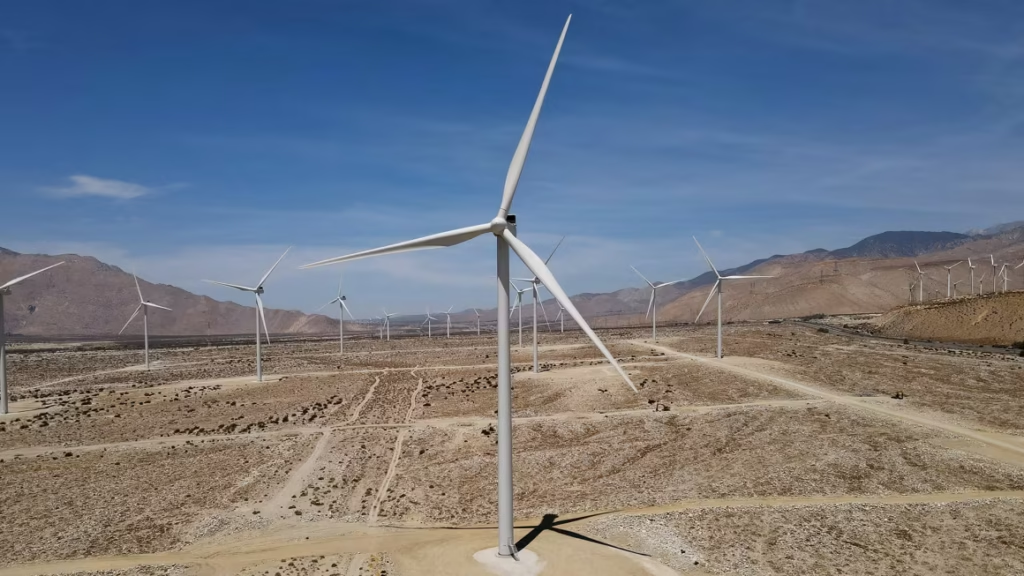In 2025, Europe achieved a historic milestone in clean energy use. The European Union generated 47% of its electricity from renewable sources, the highest share ever recorded. This achievement underscores the EU’s commitment to sustainability and reducing greenhouse gas emissions.
Solar power contributed 11% of the EU’s electricity, reflecting rapid growth in solar installations across the continent. Countries like Germany, Spain, and Italy expanded rooftop and utility-scale solar projects, making the sun a major contributor to Europe’s power mix.
Wind power also made significant gains. For the second consecutive year, wind electricity generation surpassed gas-fired power, signaling a shift in Europe’s energy landscape. Offshore and onshore wind farms have played a crucial role, with technological advances increasing efficiency and output.
Nuclear power remained a key part of Europe’s clean energy strategy, providing 24% of electricity. While not renewable, nuclear energy produces no direct carbon emissions, contributing to the EU’s goal of reducing the carbon footprint of electricity generation. Combined, renewable and nuclear energy accounted for nearly three-quarters of Europe’s electricity in 2024, a major step toward climate targets.
Experts note that this clean energy growth is the result of long-term policy planning, investment, and innovation. The European Green Deal, renewable subsidies, and carbon pricing initiatives have encouraged both public and private sectors to expand clean energy capacity.
This progress contrasts sharply with trends in the United States. Under the administration of President Trump, fossil fuel use has been increasing, and clean energy incentives have been rolled back. Analysts warn that such policies could slow progress toward carbon reduction goals, highlighting the divergence between Europe and the U.S. on climate action.
The economic impact of Europe’s clean energy expansion is also notable. The renewable sector has created thousands of jobs in manufacturing, installation, and maintenance. Investment in wind and solar projects supports local economies and encourages technological innovation. Countries leading in clean energy are attracting green investments and fostering energy independence.
Public response in Europe has been overwhelmingly positive. Citizens increasingly support renewable energy policies, seeing benefits in reduced pollution, lower greenhouse gas emissions, and energy security. Grid modernization and energy storage technologies have further enabled the integration of variable renewable sources, ensuring reliability.
Energy analysts emphasize that Europe’s success can serve as a model for other regions. Expanding solar, wind, and nuclear power, alongside energy efficiency measures, demonstrates that large-scale decarbonization is achievable. Long-term planning and policy consistency are key factors in sustaining this momentum.
Looking ahead, Europe aims to further increase the share of renewables in its electricity mix. The EU plans additional offshore wind projects, expanded solar capacity, and investment in green hydrogen. Continued innovation in energy storage, smart grids, and demand management will help integrate these resources efficiently.
The record clean energy achievement also has global implications. Europe’s leadership in low-carbon electricity generation sets an example for international climate negotiations and demonstrates that transitioning away from fossil fuels is both feasible and economically viable.
In conclusion, 2024 marked a breakthrough year for clean energy in Europe. With 47% of electricity generated from renewable sources and nuclear energy contributing an additional 24%, the continent shows that sustainable power can drive economic growth, reduce emissions, and set a global benchmark. Meanwhile, policy choices in other regions, such as the United States, highlight the importance of government support in achieving ambitious clean energy targets.
Europe’s record clean energy use in 2024 underscores a broader shift toward sustainability, innovation, and climate responsibility, signaling a promising path for the future of electricity generation worldwide.


